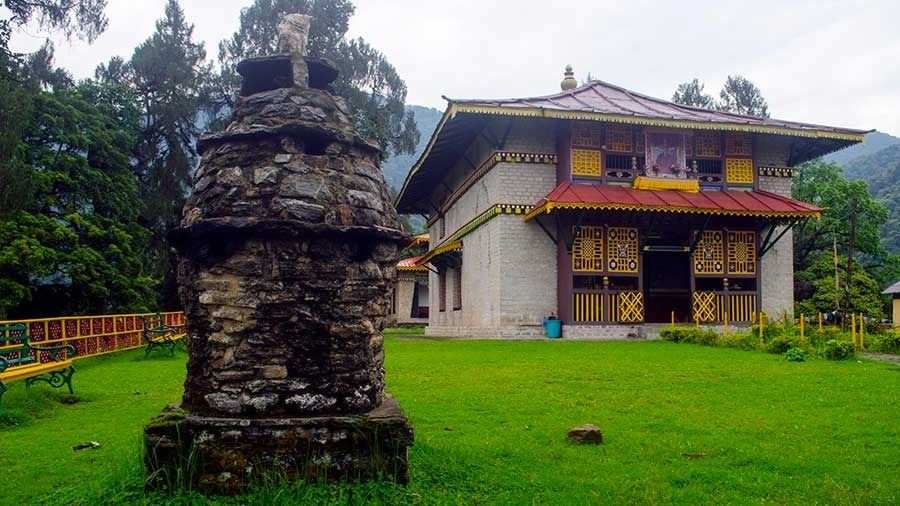A short three-hour drive from Darjeeling to Pelling in Sikkim will take you to the historically significant destination of Rabdentse, the second capital of the former Kingdom of Sikkim.
Near Pelling town, and a short two-kilometre hike from the well-known Pemayangtse Monastery, travellers can visit the stone ruins of the royal palace, which now border a bird park.
How Rabdentse came to be

Stone steps and a paved trail through woods of oak and chestnut lead to the ruins complex in Rabdentse
It was the second king of Sikkim, Tensung Namgyal — son of Chogyal Phunstok Namgyal — who shifted the capital to Rabdentse. In 1680, he was succeeded by Tenzing Namgyal, whose reign was marked by Nepal’s invasion of Sikkim that caused many residents, including the king, to flee to Lhasa. Later, an intervention by the British led to the signing of a treaty, and while Sikkim lost some land, the monarchy was restored.
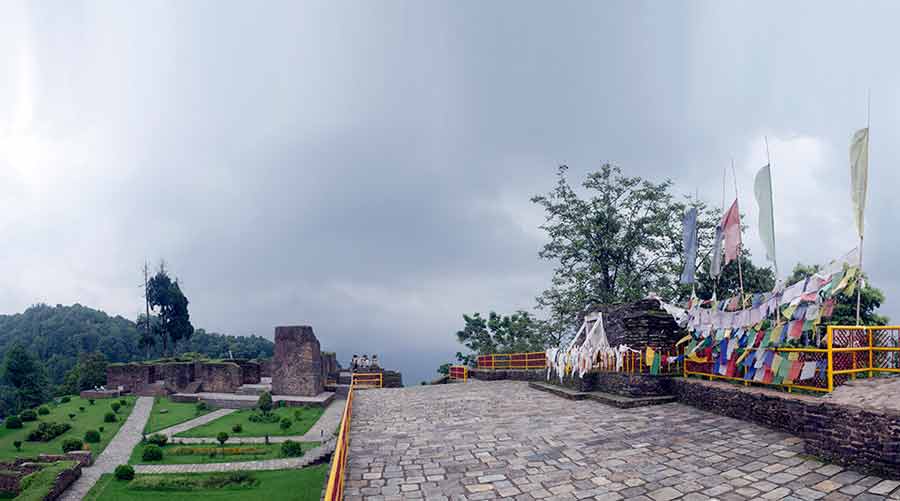
The complex is divided into two sections — the royal home on the northern flank (left) and the ‘durbar’ with the throne in the southern side
Tenzing Namgyal died in Lhasa and his son Tsudphud returned to Rabdentse. He considered the capital unsafe due to its proximity to the border and moved the state capital to Tumlong in north Sikkim. The royal palace was thus abandoned and left to decay.
The ruins of Rabdentse
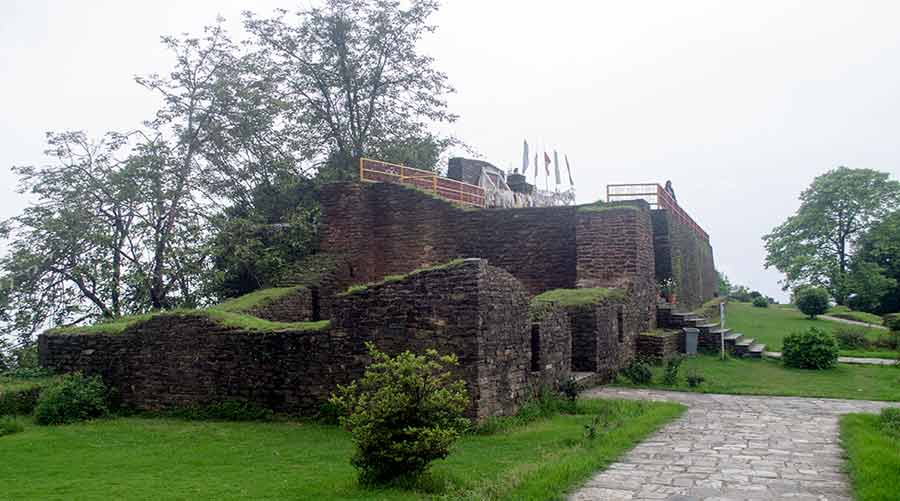
The erstwhile royal durbar that was open to the people
At the turn of the millennium, the Archaeological Survey of India (ASI) took up the initiative to restore the decaying palace of the Namgyal. The ruins were restored and landscaped with gardens, complete with flower beds, stone-paved walkways and stairs. Today, it is an ASI-protected site.
The ruins of the palace are scattered on a ridge overlooking the popular tourist spot of Pelling, and on a clear day, there are amazing views of Kanchenjunga. A trail through a montane forest of oak and chestnut leads to the complex, which is divided into two parts.

The three stupas where the royal family worshipped. On a clear day, Mt Kanchenjunga is visible in the backdrop
The northern flank, which served as the residence of the royal family, opens to a courtyard with three chortens (stupas) where the members of the family would offer prayers. The southern section was meant for the common people and is marked by a durbar with a stone throne.
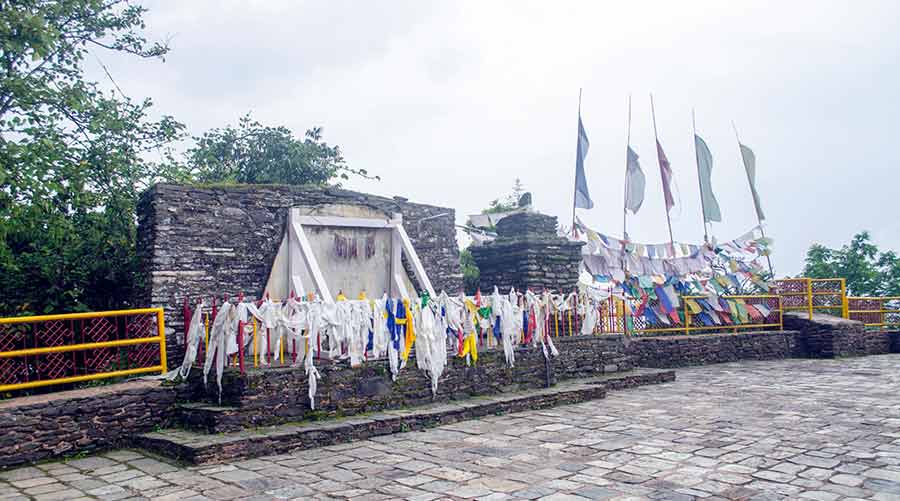
The remnants of the throne at the royal durbar
Avian encounters and prayer flags
The Rabdentse complex also houses the Sidkeong Tulku Bird Park, named after the 10th Chogyal of Sikkim, Sidkeong Tulku Namgyal. The landscaped park plays host to about 200 of the 550 avian species found in the region and one can spot owls, eagles, bulbuls, flycatchers, pheasants and babblers, among many other birds. An elevated walkway in the park is the best spot for sightings and close encounters with the feathered residents.
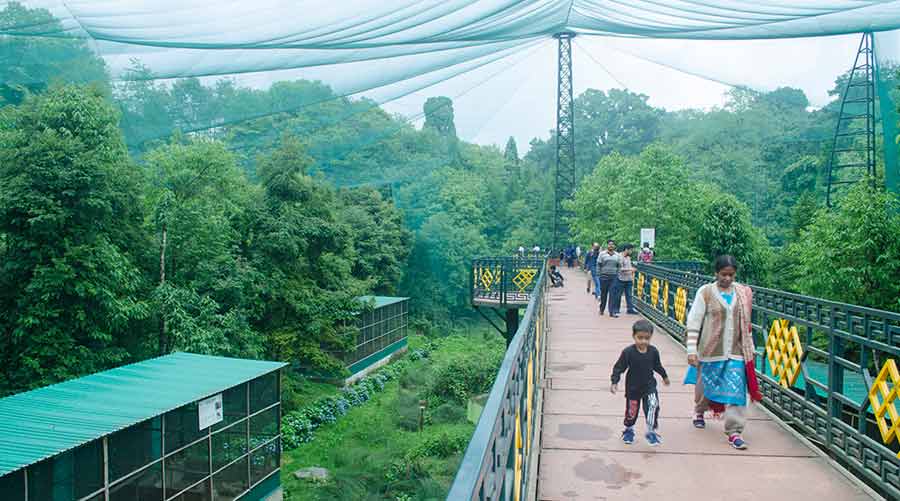
The elevated walkway in the Sidkeong Tulku Bird Park by the ruins offers a chance for close encounters with avian residents
A small hike away, the Pemayangtse Monastery welcomes visitors with the familiar sight of fluttering prayer flags. The three-storeyed monastery houses some wonderful thangkas (traditional Buddhist paintings) as well as a large collection of rare books. Pemayangtse is also a centre for Buddhist research and learning for lamas, and about 150 monks live and learn here.

The well-known Pemayangste Monastery is a centre for Buddhist learning and a residence for about 150 monks
Travel details
- Rabdentse is very close to Pelling town, about four and half hours by road from Gangtok, and about three hours from Darjeeling
- The best option to stay when visiting is in Pelling, which has many accommodations
- A visit to Rabdentse can be clubbed with a visit to the Throne of Norbugang in Yuksom, only about an hour away by road.
Rangan Datta is a mathematics and management teacher by profession and a travel writer and photographer by passion. He has been addicted to discovering off-beat places since his undergraduate days at St. Xavier's College. Blogging and contributing to Wikipedia are his other passions.

